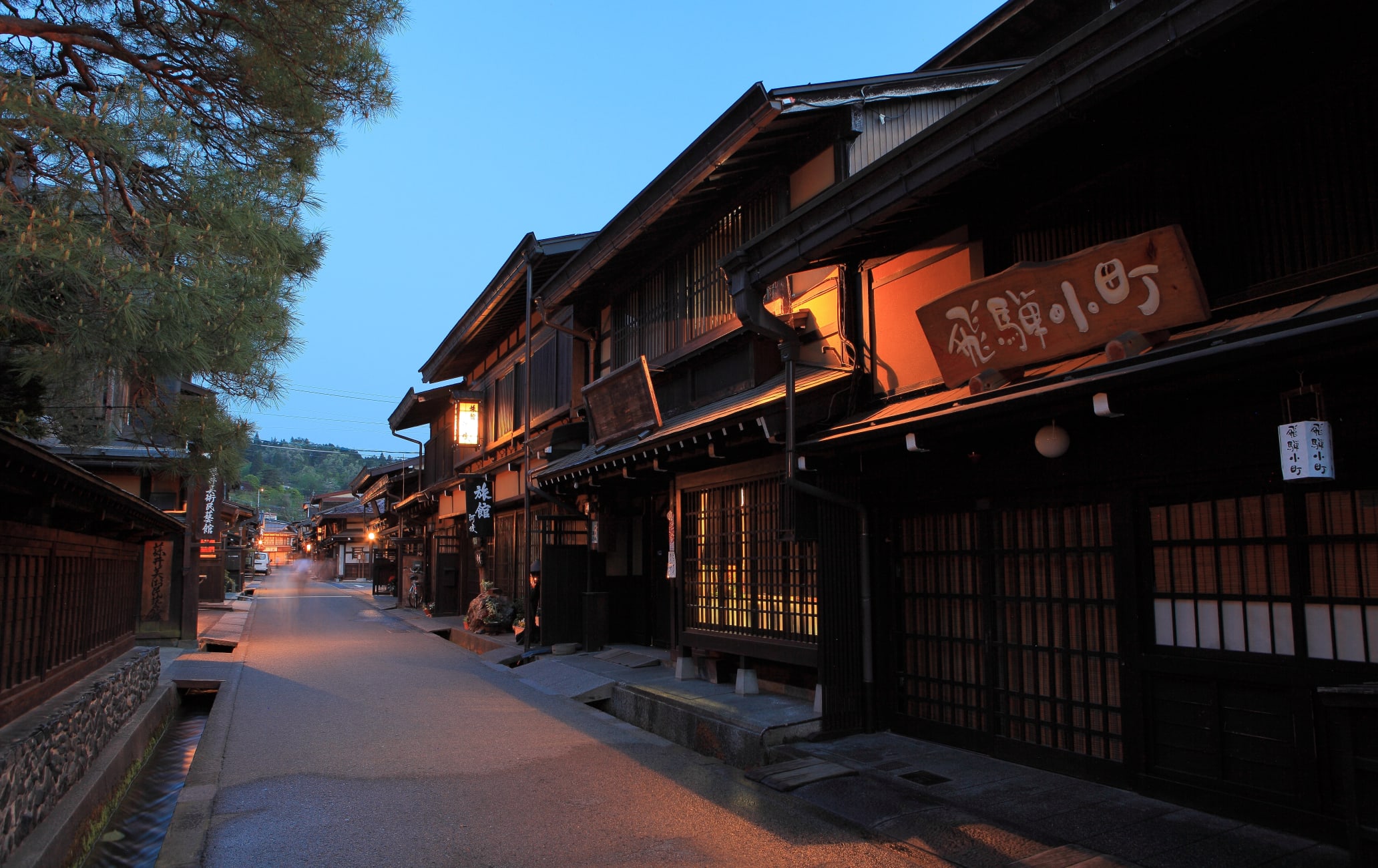Open an atmospheric time capsule of life in Edo-period Japan
Takayama was once a bustling hub drawing expert artisans, farmers, and merchants from throughout the surrounding area, and Sanmachi and Oshinmachi preserve the traditional aesthetic of this time. Enter this district, and you step into the closest thing to the Edo period outside of a historical drama.
Don't Miss
- Museums dedicated to Takayama's history
- The delicious food and sake
- Wandering the streets to soak up the atmosphere
How to Get There
Sanmachi is a 15-minute walk east of JR Takayama Station.
Trains from JR Nagoya leave for Takayama every hour, taking about 2 hours 20 minutes.
Takayama is connected to Toyama and Matsumoto, in Nagano, by trains and highway buses. From Toyama, JR Hida (limited express) trains take about 1 hour 30 minutes to Takayama Station. Multiple highway buses between Matsumoto and Takayama each day.

Scenic streetscapes
The Sanmachi, Oshinmachi, and Shimoni-no-machi districts of Takayama retain the atmosphere of the Edo period (1603-1867) and are important "Preservation Districts for Groups of Traditional Buildings". During the Edo period, Takayama was a lively hub town bustling with craftsmen, merchants, and farmers from the surrounding area. Today that old-world atmosphere is preserved in the three main streets of Sanmachi, the Shimoni-no-machi district north of Sanmachi, and the Oshinmachi district.

Soak up the atmosphere
The most profound experience is just to simply stroll around town, soaking in the historic architecture.

Fujii Folk Craft Museum is a particularly good example of this. Exhibitions in these houses range from life's necessities to more artistic heirlooms. Kusakabe and Yoshijima Heritage Houses to the northeast of Sanmachi also provide very good glimpses of Takayama's past.
Soba so good
There are plenty of restaurants and cafes serving handmade soba and local cuisine and produce. Seven sake breweries remain in the area, some offering tours and tastings. Takayama sake brewers pride themselves on innovation as well as tradition, and each has its own distinctive line and style.

Takayama Jinya
This was the main government office where an official dispathed from the capital governed Takayama. It was known as the "jinya" and was under direct control of the shogunate. The governor of the jinya was responsible for collecting annual tributes for the shogunate and managing forest resources. A storehouse remains on the grounds that was used to store the rice collected on behalf of the shogunate. Today, it is an exhibition space with displays and information about the history of Takayama Jinya.
Such is the beauty and craftsmanship that went into its construction that Takayama Jinya rated two stars in the prestigious Michelin Green Guide Japan in 2015.
Today, Takayama Jinya is well known for the Jinya-mae market that takes place in front of the building. The other market, Miyagawa Morning Market, takes place along the banks of the Miyagawa River, a short walk away.

Tales from the past
The Hida Takayama Town Museum introduces the history of Takayama and the arts and crafts and traditional culture that developed in the castle town. Learn all about the town from its founding to its townhouses.
Festivals
The famous Takayama Autumn Festival is an important annual ritual of Sakurayama Hachimangu Shrine, where the guardian deity of the northern half of the city is enshrined. The festival is also known as the Hachiman Matsuri. The floats wheeled through the streets as part of the festival are very ornate, decorated with intricate carvings and elaborately detailed metal-work.
Some of the floats are on permanent display in the nearby Yatai Kaikan . Mechanical dolls similar to the dolls that perform dances on top of the floats are also exhibited in the Karakuri Museum.
The spring festival is a ritual of the Hie Shrine which enshrines the guardian deity of the southern half of the town.

Make yourself at home
There is enough in and around Sanmachi to fill an entire day, and with plenty of hotels, guesthouses and ryokan nearby, it makes an excellent base for exploring the wider Takayama and Hida area .


























































